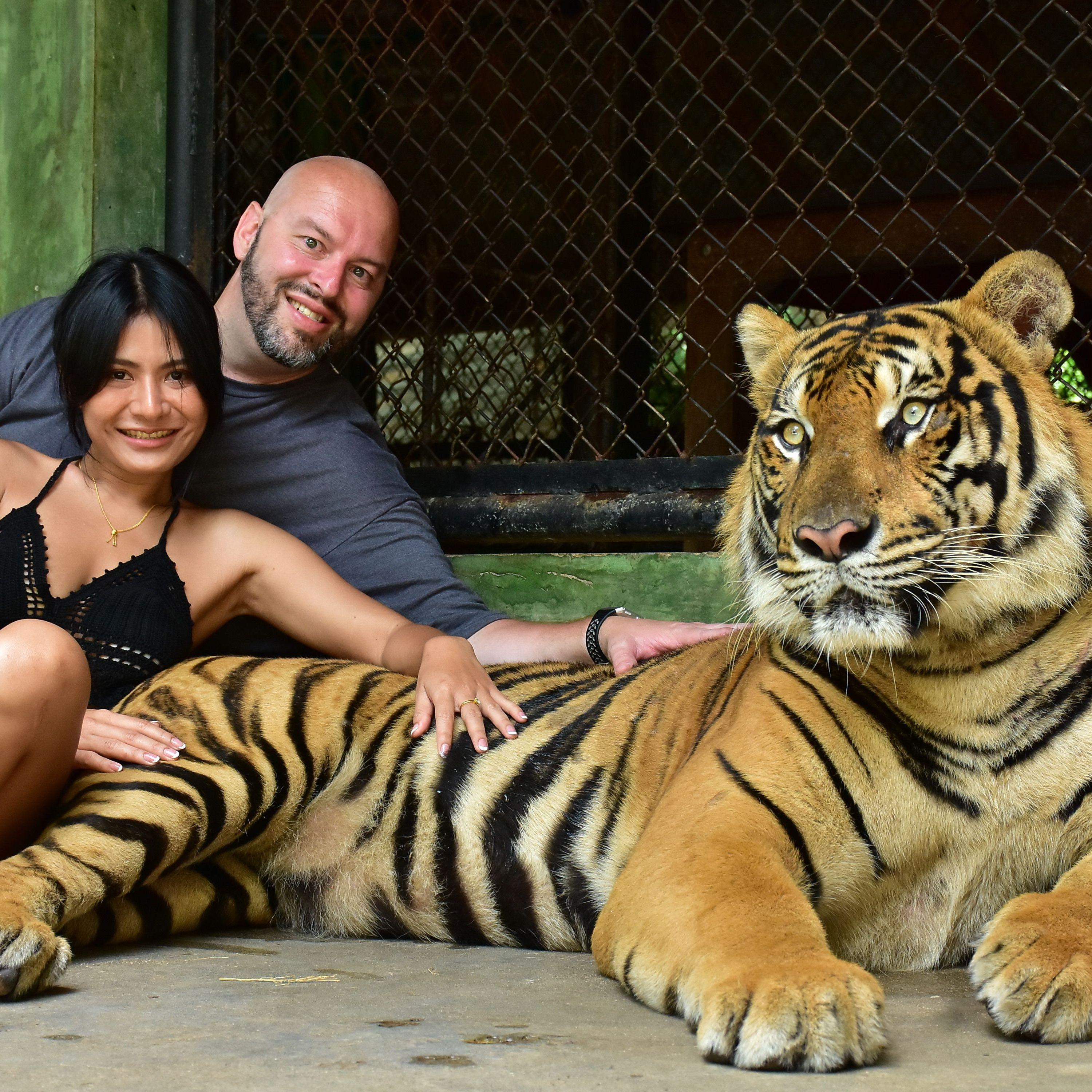
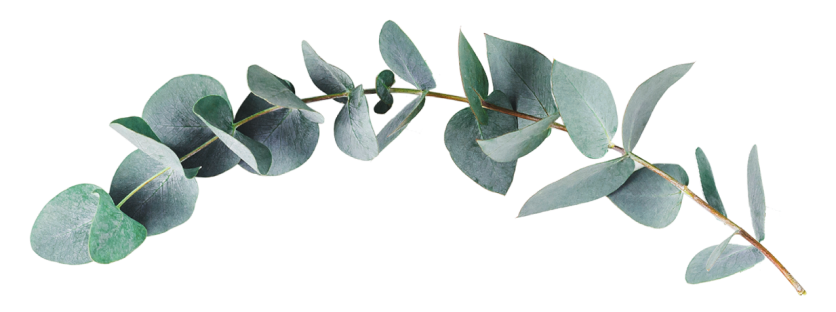
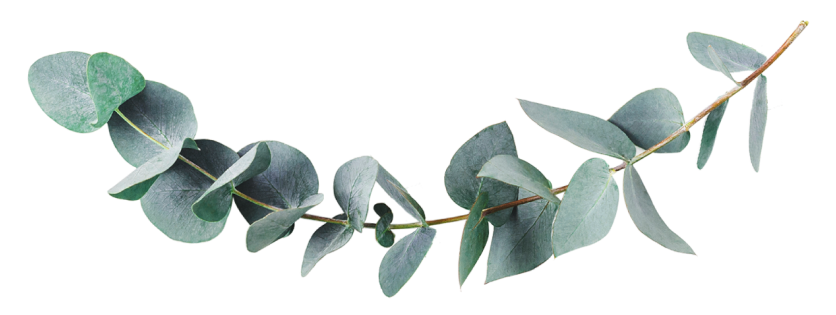
Wasana Norsingha
Beau Ortmayer
Wasana Norsingha
Beau Ortmayer
May 28, 2025
Registry
Gallery
Things To Do

Phuket

Bangkok
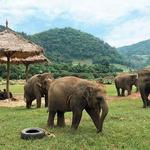
Chiang Mai
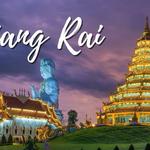
Chiang Rai
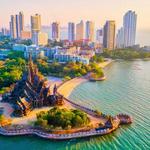
Pattaya City
FAQs
Question
Do I need a valid passport?
Answer
Yes. You need a valid passport with an expiration of more than 6 months from the date of entry.
Question
Do I need covid vaccine in Thailand?
Answer
As of now No, but it is highly recommended. There is a possibility that a country that you may have a layover in still requires this vaccine.
Question
Do I need travel insurance?
Answer
No, however this is recommended. If you get sick or have an accident it will come in handy. This can be purchased online or through AAA.
Question
What to Expect in Thailand
Answer
Language: While Thai is the native language, young people are taught basic English in school, and many signs are printed in English. You’ll manage, but speak slowly and use signs as well. Alternatively, you can learn Thai language because, not surprisingly, locals may be more eager to communicate with you as many appreciate and are quite fond of when foreigners take the time to learn their language. You do not need to be fluent, the basics will do just fine to make it easier for you to get around and get a fuller experience. Currency: Thai Baht is the local currency. 1 USD=35THB (March 2023). Get a fee-free transfer with this link via WISE. Climate: Thailand has a tropical climate, characterized by high temperatures and high humidity throughout the year. There are three main seasons: the hot season from March to May, the rainy season from June to October, and the cool season from November to February. The south has a more stable temperature and rainfall pattern throughout the year, but the north and northeast have colder temperatures during the cool season. Culture: Thailand’s culture is a rich and diverse blend of ancient traditions and modern influences, with a strong emphasis on respect, politeness, and a love for spicy and flavorful cuisine. You will have to cover up your elbows and knees when visiting temples out of respect! The same goes for public institutions. Water: Don’t drink the tap water, stick to bottled. You will find filtration stations in the cities to refill your bottle cheaper.
Question
Do I need a tourist Visa?
Answer
No, if your stay is less than 60 days
Question
Where is the U.S. Embassy?
Answer
U.S. Embassy Bangkok 95 Wireless Road Bangkok 10330 Thailand Telephone: + (66) (2) 205-4049, 02-205-4049 (within Thailand) Emergency After-Hours Telephone: +(66) (2) 205-4000, 02-205-4000 (within Thailand) Fax: +(66) (2) 205-4103, 02-205-4103 (within Thailand) Email: acsbkk@state.gov
Question
Do I need a international roaming plan on my cell phone?
Answer
Check with your current carrier on this. If your phone is unlocked you can buy sim cards in the Bangkok airport.
Question
Is the tap water safe to drink?
Answer
In many areas, tap water is not potable. Bottled water and beverages are generally safe, although you should be aware that many restaurants and hotels serve tap water unless bottled water is specifically requested. Be aware that ice for drinks may be made using tap water. (I got sick brushing my teeth with tap water) I recommend using bottle water for everything.
Question
Can you buy U.S. medications in Thailand?
Answer
It is very hard to find U.S. brands in Thailand. It's recommended you bring enough over the counter medication to last your entire trip. If you have a weak stomach bring extra Pepto the food is spicy at times. lol
Question
Where is the best place to exchange currency?
Answer
The best rates are found in Thailand Banks or ATM machines. The airport kiosks will give you the worst rate.
Question
What is the best flight path to Thailand? Is there a direct flight?
Answer
No direct flights from United States. You have to fly east or west. (I prefer to fly west) There is a direct flight option from Vancouver Canada. I have gone both directions. If you fly east you will fly over the middle east and connect in Doha or a sounding country. This will take you past may of the middle east countries and give you some excitement to think about for several hours. Doha is a beautiful and safe airport with many amenities. If you fly west you have several options for connections but it will make a difference on the connecting flight to Bangkok. The first flight to Taipei, Seoul, or Hong Kong will be roughly 12-14 hours depending where you start from. However Hong Kong to Bangkok is about 2.5 hours Taipei to Bangkok about 3.5 hours and Seoul to Bangkok 5.5 hours. These flight paths will depend on the airline that you choose to fly. Here is the airlines i have flown and the city to give you a head start. Hong Kong - United, American Taipei - China Airlines Seoul - American, Delta/Korean Airlines Doha - Qatar Airlines
Question
What is the best way to get around Thailand?
Answer
Taxi or motorcycle taxi if you are daring. Bangkok has great public transportation.
Question
Hotel reservations
Answer
I use booking.com to find local hotels and save money. Starting out I used my Marriott app.
Question
Greetings and Basic Phrases
Answer
Sawasdee (Krub/Ka): Hello (for males/females) Khob khun (Krub/Ka): Thank you (for males/females) Chai: Yes Mai chai: No Kob kun mak: Thank you very much Mai pen rai: You’re welcome/It’s okay Sabai dee mai (Krub/Ka): How are you? (for males/females) Sabai dee (Krub/Ka): I’m fine (for males/females) Chai-yoh!: Cheers! Lao jow: Sorry/Excuse me
Question
Transportation and direction
Answer
Nai bai duay?: Where is the bus station? Rot fai: Train Rot may: Airplane How much is the taxi?: Lot dai tao rai? Turn left/right: Leua sai/leua kwaa Straight ahead: Trong pai Stop here, please: Yoot tee nee krub/ka How far is it?: Meua-rai Where is the bathroom?: Hong nam yoo nai? Can you take me to [destination]?: Dai mai ow chan dtang [destination]?
Question
Ordering Food and Drinks
Answer
Aroy: Delicious Menu: Rue lae What do you recommend?: Su su arai? I am vegetarian: Chan gin jay I would like [dish]: Ao [dish] Spicy: Pet Not spicy: Mai pet Water: Nam Coffee: Gafae Bill, please: Kep tang krub/ka
Question
Emergency Situations
Answer
Help!: Chuay! Police: Pholisee Hospital: Rong paya baan I need a doctor: Chan tong kaan mor I lost my passport: Chan long toong pa-sa-pawt Call an ambulance: Khor ro tao ror sa-mong-kol I don’t feel well: Chan mai sabai Where is the nearest pharmacy?: Ran lai duay? I’ve been robbed: Chan bao Fire: Fai
Question
What will the temperature be?
Answer
The average daily temperature ranges from 29°C (84°F) to 35°C (95°F). The northern regions tend to be slightly cooler, with temperatures averaging around 31°C (88°F), while the coastal areas, such as Bangkok and Phuket, can reach temperatures as high as 35°C (95°F).
Question
Know the etiquette when greeting people
Answer
When meeting locals in Thailand, the standard greeting is the wai – a respectful dip of the head with the hands held palms together in front of the chest. Don’t shake hands unless the other person initiates the handshake. If you get invited into a Thai home, remove your shoes before you enter and avoid pointing the soles of your feet towards another person.
Question
Be respectful of Buddhism
Answer
Some 95% of Thais are Buddhist, and the national religion weaves through every aspect of life. To show proper respect, remove footwear before entering any Buddhist structure, and wear clothing that covers the shoulders, upper arms and upper legs. Never point the soles of your feet towards any Buddhist image (or monk), and don’t touch Buddha statues on the head. Give way to monks when walking on footpaths, and don’t sit next to them on public transport. It is also taboo for a woman to touch a monk or their belongings.
Question
Is there a dress code to the Royal Palace?
Answer
No shorts, open toe shoes (less skin the better) Since Thailand's royal palaces are considered royal grounds, there are certain dress codes to follow for tourists. But don't worry, it's not complicated - just dress modestly: Men: Wear a shirt with sleeves and long pants. Women: Wear a shirt with sleeves, a skirt that covers the knees, or long pants. The dress code for the royal palaces in Thailand, such as the Grand Palace, is strict and respectful: Men: Wear long pants and a shirt with sleeves Women: Wear a skirt that covers the knees, long pants, or a shirt with sleeves Clothing to avoid: Sleeveless shirts, cropped tank tops, sheer clothing, shorts, ripped jeans, and flip-flops Footwear: If wearing sandals or flip-flops, socks must be worn The Grand Palace and other royal temples have strict dress codes because the grounds are still used by the Royal Family for ceremonial occasions. Dressing appropriately shows respect for Thai culture and helps preserve the beauty of cultural tourism. Some palaces may provide alternative clothing or cover-ups, but it's recommended to come prepared. If you don't have the right clothing, you may need to extend your queue time to get a cover-up. Dress code for the Royal Thai Palace No sleeveless shirts or vests No short or see-through tops No short hot pants/short pants No torn or tight pants No bike pants No mini skirts
Question
Never disrespect the king or royal family
Answer
The Thais take respect for the monarchy extremely seriously, and lèse-majesté (maligning the royal family) is a criminal offense. Never show disrespect towards the monarch or depictions of the royal family (including on money).
Question
What to expect at meal time
Answer
When dining out in Thailand, everything tends to arrive on the table at the same time, usually placed in the middle of the table for everyone to share. Thailand abandoned chopsticks in the 19th century. You’ll get a spoon and fork but no knife – but most dishes come as bite-sized morsels, so you won’t need one. Sticky rice is usually bundled up into balls and eaten with the fingers.
Question
Vegetarian is a relative term in Thailand
Answer
Fish sauce, oyster sauce and egg are widely used as cooking ingredients in Thailand. The safest bet for people who don't eat fish or meat is to seek out Indian-owned vegetarian restaurants, or restaurants serving kin jay Buddhist cuisine. If in doubt, ask the person making the food if it is jay – the term mang sà wí rát just means food that doesn’t contain pieces of meat or fish but doesn't mean it's necessarily suitable for vegetarians.
Question
Health risks: stomach bugs, mosquito bites and rabies
Answer
The most common trouble travelers face in Thailand is trip-spoiling stomach bugs. Never drink tap water, wash your hands before eating, stick to busy eating establishments and be cautious of ice, unwashed or unpeeled fruit and uncooked vegetables. If you become unwell, seek out private hospitals in larger cities rather than public hospitals. Mosquito bites can easily become infected in Thailand’s tropical climate. Bring mosquito repellent, and use mosquito nets (or bring your own). Rabies is another risk – always seek medical attention if you are bitten by a dog, cat or monkey.
Question
Steer clear of drugs in Thailand
Answer
In June 2022, marijuana and hemp were removed from the Category 5 narcotics list in Thailand. However, there are still restrictions and smoking marijuana in public is not recommended. Crossing borders with Class A drugs carries the death penalty, and even the possession of small quantities can bring a hefty prison sentence – it’s really not worth the risk. Also note that smoking in public can attract heavy fines. If you take any prescription medicines, check that these are allowed into Thailand before you travel.
Question
Prices may well be inflated for tourists
Answer
In general, Thailand is hassle-free, but tourists are often charged inflated prices for tuk-tuks and unmetered taxi rides – ask a local how much journeys should cost and use that as a yardstick for a fair fare.
Question
Make sure you're insured to ride that scooter
Answer
housands of travelers rent a scooter or motorcycle in Thailand, but make sure your home driving license covers you for any vehicle you hire, and carry your passport (or a copy of the ID pages) in case the police ask for it. Wear a helmet, ride cautiously and make sure the rental comes with liability insurance – every year, hundreds of tourists are injured in motorcycle and scooter accidents in Thailand. Always give way to larger vehicles, and watch out for livestock, potholes and other hazards on the road.
Question
Do I need an international drivers license?
Answer
If you plan to drive a car or a scooter/motor bike the answer is yes. Riding a scooter is a big part of life in many South East Asian countries and Thailand is no different. It’s a magical way to explore and discover places you may never find without the freedom of your own two wheels. It’s super easy to rent a motorbike in Thailand, and cheap! Every other person seems to be renting a bike and often, with no interest in checking if you’ve got a license or have ever ridden one before. Technically, in Thailand, you need an IDP (International Driver Permit) to drive a moped. In most countries, these are super easy to apply for and get delivered before you leave. I’m from New Zealand and mine was approx 15 USD and I just needed to apply online. Check the process for your country, it should be pretty simple. dani on a scooter in thailand See, helmets are cool. Photo: @danielle_wyatt While no rental companies usually ask for your IDP, you may get stopped by traffic police and have to pay a fine if you don’t have one. This happened to me when staying in Pai a few years ago. More importantly, some travel insurance companies won’t cover accidents if the driver doesn’t have one! So, be sure to check your policy or apply for one before you head over. The roads in Thailand can be incredible but also wild (to say the least). If you do decide to rent a motorbike, here are my top tips: You’re not too cool to wear a helmet. Drive slow and be patient. Make sure you drive on the left side of the road. Don’t drink or smoke weed and drive.
Question
Do you tip in Thailand?
Answer
When it comes to Thailand, while tipping isn’t necessarily customary, it’s certainly appreciated. However, it’s not as simple as giving a percentage of your bill – there are certain situations where it is more appropriate to tip, and some where it isn’t. Here’s a guide to the Thai customs and etiquette surrounding tipping. Keep the change? Depending on where you’re eating, the tipping culture could be vastly different. If you were to order street food and tell the vendor to keep the change, there’s a high chance that they might insist you take it back – whether through humility or confusion at a perceived overpayment – even if it’s just five baht. Doing as the locals do is sound advice for any travelers, and you’re unlikely to see a local tipping a street food joint so don’t worry about it too much. If the food really was that delicious, order another one or leave a few baht on the side and make your escape before they have the chance to thrust it back into your palm. Eating in restaurants or cafes is another story. It’s worth keeping in mind that the waiting staff in such places often work long hours with little breaks for less than $10 a day. If you order a snack and a coffee that comes to, for example, 85 baht, then it’s common to simply leave behind the remaining 15 baht change or a 20 baht note that you’re unlikely to miss, but which could help to make all the difference for a young waitress with a family or a university course. If you’re heading to an area for a prolonged amount of time, leaving a tip each time isn’t necessary but can see you rewarded with better service and preferential treatment as a regular. Naturally, the pricier the restaurant, the more you’ll be expected to tip. Once you start to hit the high-hundreds with your bill, you can start to think about tipping 10% and up for good service, though make sure that service charge isn’t included in your bill already.
Question
What is the time difference from the United States to Thailand?
Answer
Depending where you live in the United States the time difference will vary between 11-14 hours. Thailand is ahead of the United States. When traveling to Thailand expect to lose about 36 hours with the time difference and travel time. Eastern Time zone 11 hours Central Time zone 12 hours Mountain time zone 13 hours Pacific time zone 14 hours
Question
How much is food and drinks in Thailand?
Answer
This will depend where you eat. If you eat at the tourist places you will pay tourist prices. I have found restaurants that are the same price in the states and I have had meals for $5. Food: Eating in Thailand is often inexpensive, with street food being a popular and inexpensive choice, with prices ranging from 30 baht (90 cents) to 80–90 baht ($2.5 USD). Restaurant meals can range from 50 to 500 baht, depending on the cuisine and establishment. Scroll down to the food section for more details. The cost of drinks in Thailand varies depending on the type of drink and where it's purchased: Beer A can of local beer costs around 40 baht, while a can of a major brand like Heineken costs around 50 baht. In bars and restaurants, local beers cost around 80–100 baht, while foreign beers cost around 100–140 baht. In some high-end venues, a beer can cost up to 280 baht. Coffee A cup of coffee from a street vendor costs around 40 baht, while a cup from a café costs around 60–90 baht. Some say that Thailand is not an expensive country to travel to. Food and utilities are affordable, and the cost of living in Thailand can be around 2.6 times less than in the U.S..
Question
Food Options and Prices
Answer
Thailand is well-known for its delicious and reasonably priced cuisine, and visitors can sample a wide variety of delicacies without breaking the bank. Food costs in Thailand might vary greatly depending on where you go and what sort of cuisine you choose. In general, street cuisine and small eateries are quite cheap, with meals costing as little as 30–50 baht (about $1–$1.50 USD). Prices for more upmarket eating experiences will be greater, but still quite reasonable in comparison to Western countries. For example, a ramen could cost you 300 baht ($7 USD) whilst a cocktail in a classy place might reach 400 baht ($12 USD). Nonetheless, costs in tourist districts or at high-end restaurants catering to expats or visitors might be similar to prices in places like London or Milan. STREET FOOD STALLS The most common food for locals. You will notice them almost everywhere. They are on wheels and use a huge wok pan and a gas canister They don’t look state of the art however, it’s pretty safe to eat there and everything is cooked in front of you with fresh ingredients. Food prices varry between 40-60 baht ( that’s 1-1.5 USD) thailand street food LOCAL THAI RESTAURANTS Local Thai restaurants are not fancy, but they have English menus, and you’ll recognise them fast. They have normal tables, are on the ground floor, and the price is about 50%–100% higher than the food stalls on the street. This means you might be paying about 80 baht ($2 USD) instead of 40 baht. local thai food restaurant MALL RESTAURANTS For example, a ramen will cost you at least 200 baht and an all you can eat sushi for 90 minutes starts from 399 baht. WESTERN FRANCHISES (You will pay Western prices)
Question
Cost of Living In Thailand Overview
Answer
Thailand is regarded as a low-cost-of-living country when compared to Western countries. The cost of living varies based on geography and lifestyle preferences, with big cities such as Bangkok and Chiang Mai being more costly than rural locations. Basic accommodations cost a few hundred baht per night, whereas luxury hotels cost several thousand baht per night. A one-bedroom flat in Bangkok may cost between 8,000 and 25,000 baht per month. Food: Eating in Thailand is often inexpensive, with street food being a popular and inexpensive choice, with prices ranging from 30 baht (90 cents) to 80–90 baht ($2.5 USD). Restaurant meals can range from 50 to 500 baht, depending on the cuisine and establishment. Scroll down to the food section for more details. Accommodation: The cost of a simple guesthouse or hostel can range from a few hundred baht per night to several thousand baht per night for a luxury hotel ($100 USD +). Renting a one-bedroom flat in Bangkok can range from 8,000 to 25,000 baht per month, depending on location and quality. Airbnb is not very popular, and the best flats are through agencies or other websites. More on this below. Transport: Thailand’s transportation is likewise reasonably priced. Taxis, tuk-tuks, and motorbike taxis are all easily accessible and reasonably priced, with short rides starting at roughly 30 baht. Buses and railroads are also economical modes of public transit, however, trains are not fast and buses are overcrowded and don’t come in time. A train ticket is between $1 USD and $40-$50 depending on the distance. Outside Bangkok, your best bet will be to rent a car or scooter.
Question
Cost of Living In Thailand Overview (Continued)
Answer
Sightseeing: is very accessible and, in a lot of cases, free. For example, the Grand Palace in Bangkok, a complex of buildings at the heart of Bangkok, including the famous Temple of the Emerald Buddha, costs 500 baht (approximately $16 USD) Wat Pho, Bangkok: Wat Pho is a temple complex that houses the famous Reclining Buddha statue, which is 46 meters long and covered in gold leaf. The entrance fee is around 100 baht (approximately $3 USD). The entrance fee for Ayutthaya Historical Park: Ayutthaya which was once the capital of Thailandis isaround 50 baht (approximately $1.50 USD) Chiang Mai Night Bazaar is free whilst a boat tour in Phang Nga Bay typically cost around 1,500 baht (approximately $50 USD) per person. Experiences: They are not cheap or expensive, so they are pretty affordable for most tourists traveling with some money. Depending on how long the tour takes (half day, one day, etc.), you could be paying between 800 baht ($23 USD) – cooking classes in Chiang Mai and up to $130 USD for a day trip to see an elephant sanctuary. One option to live experiences in The Land of Smiles is to take Thailand group tours from your home country and have everything managed for you, from flights to schedules and types of experiences. Medical: if you have dental issues, an X-ray can cost 200–500 baht (aprox $6-12 USD) while a colored filling is around 1000 baht or $30 USD. The treatment in the hospital is not free in Thailand, so you want to make sure you have good health insurance, especially if you stay long-term. cost of living in thailand 2023
Question
Tuk Tuks
Answer
Tuk Tuks are a great idea anywhere in Thailand because you’ll find them at any corner or stop them on the street. Usually they fit a bunch of people so if you are travelling with a group, you will be saving money. A short ride of about 10 minutes can be $1 USD.
Question
Do I need a power adapter in Thailand?
Answer
It is recommended. Thailand is 220 V and the USA is 110 V. In Thailand, the voltage of domestic AC is 220 volt (50 cycles). Foreign visitors are advised to bring along travel adaptors to fit the outlets in the country. Electrical sockets in Thailand are compatible with both flat parallel prongs (like in the United States and Japan) and two round pins (like in most European and Asian countries). While two-pin sockets are common in Thailand, some establishments like hotels and offices also have three-pin outlets installed. Visitors from countries that use 110-voltage electricity are recommended not to bring their personal 110V appliances, and instead find the 220V substitutes if possible. This is because it can be dangerous to use an electrical appliance that is rated at a different voltage from the supply. Most 110V appliances function with 220-to-110 voltage converters (transformers) which are available at most department stores. However, there are a number of concerns surrounding the application of such tools, including: (1) issues with ground connection and electric shock; (2) the rating of the transformer must match the voltage of the appliances to which it will connect; (3) the normal operation of an 60 Hz appliance may be affected if it is used on a 50Hz supply, and (4) the transformers are often polarity sensitive.
Question
Where do I need to fly into?
Answer
You will fly to Bangkok first. From there it will be up to you if you want to rent a car and drive to the wedding or fly to the nearby city of Khon Kaen Thailand. Khon Kaen is a university town and the 4th largest city in Thailand. There are many flights from Bangkok to Khon Kaen. You can take a shuttle or taxi from the airport in Khon Kaen to get to your hotel.
Question
How will I get from Khon Kaen to the wedding?
Answer
We will be providing a bus from the wedding hotel to the wedding venue and back for anyone that wants to use this option.....More details to come.
RSVP
Please enter the first and last name of one member of your party below.
If you're responding for you and a guest (or your family), you'll be able to RSVP for your entire group on the next page.